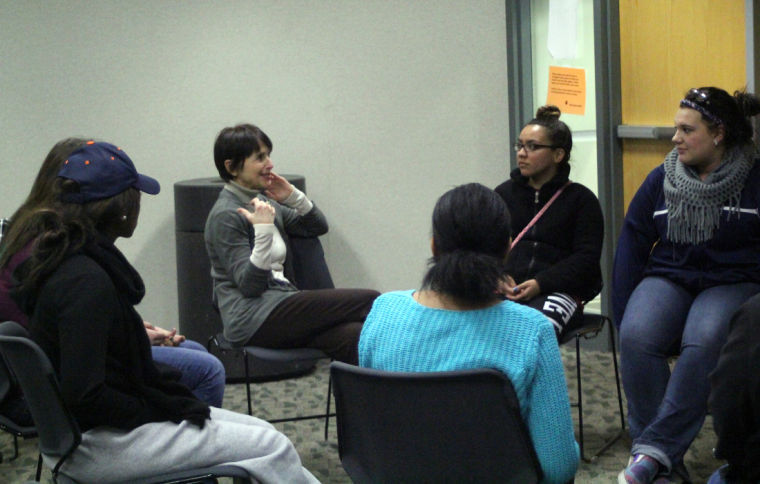Local homelessness seen in film
Media studies professor Laura Vazquez (center) leads a discussion based on the events in her documentaries about homelessness Monday in the Stevenson Smart Classroom. Students shared stories about their personal lives and how hardships affected their lives and environment.
November 18, 2013
Media studies professor Laura Vazquez screened documentaries she produced on homelessness to educate students Monday in the Stevenson Smart Classroom.
The Office of Student Engagement and Experiential Learning and its Huskie service scholar peer mentor program joined forces in hosting Vazquez’s documentary screening. The event was part of Homelessness and Hunger Awareness week.
“The goal of this entire week is to raise awareness and to gain a different understanding of homelessness,” said Ashley Pales, a member of the Husker service scholar peer mentor program.
There were two documentaries shown. The first, “My Own Four Walls,” centered around children who are homeless and how they became homeless.
The second, “On Their Own: Unaccompanied Youth,” is centered around homeless high school students and how they became homeless. “On Their Own: Unaccompanied Youth” focused on the DeKalb County area.
“The most common person in America today is a child,” Vazquez said.
Vazquez said a majority of homeless shelters do not want to take in teenagers, especially if one is a boy. This dynamic ends up breaking apart homeless families that consist of a parent, young child and teenager. The homeless teenager is usually left behind, forced to fend for his or herself, Vazquez said.
After the first documentary was screened, attendees participated in a discussion on the film. Some viewers said they found it interesting when the documentary showed young children being forced to grow up so fast and care about having a roof over their heads rather than care about who they will play with during recess.
The next documentary, “On Their Own: Unaccompanied Youth,” said the high school students shown were homeless because they were gay or their parents kicked them out of their homes because they thought they were old enough to take care of themselves.
During the second documentary’s post-showing discussion, Vazquez shared a story of a homeless shelter director who was once homeless. The director became homeless because when she was 10 her stepfather would visit her room at night, Vazquez said. The director told her mother and she did not believe her, so the girl left home.
Vazquez also said the highest recorded population of homeless children in DeKalb County are in Sycamore.
“It was really informative, especially with it being about the DeKalb area,” said senior psychology major Jade Harris. “Especially knowing that the most homeless children are in Sycamore.”



